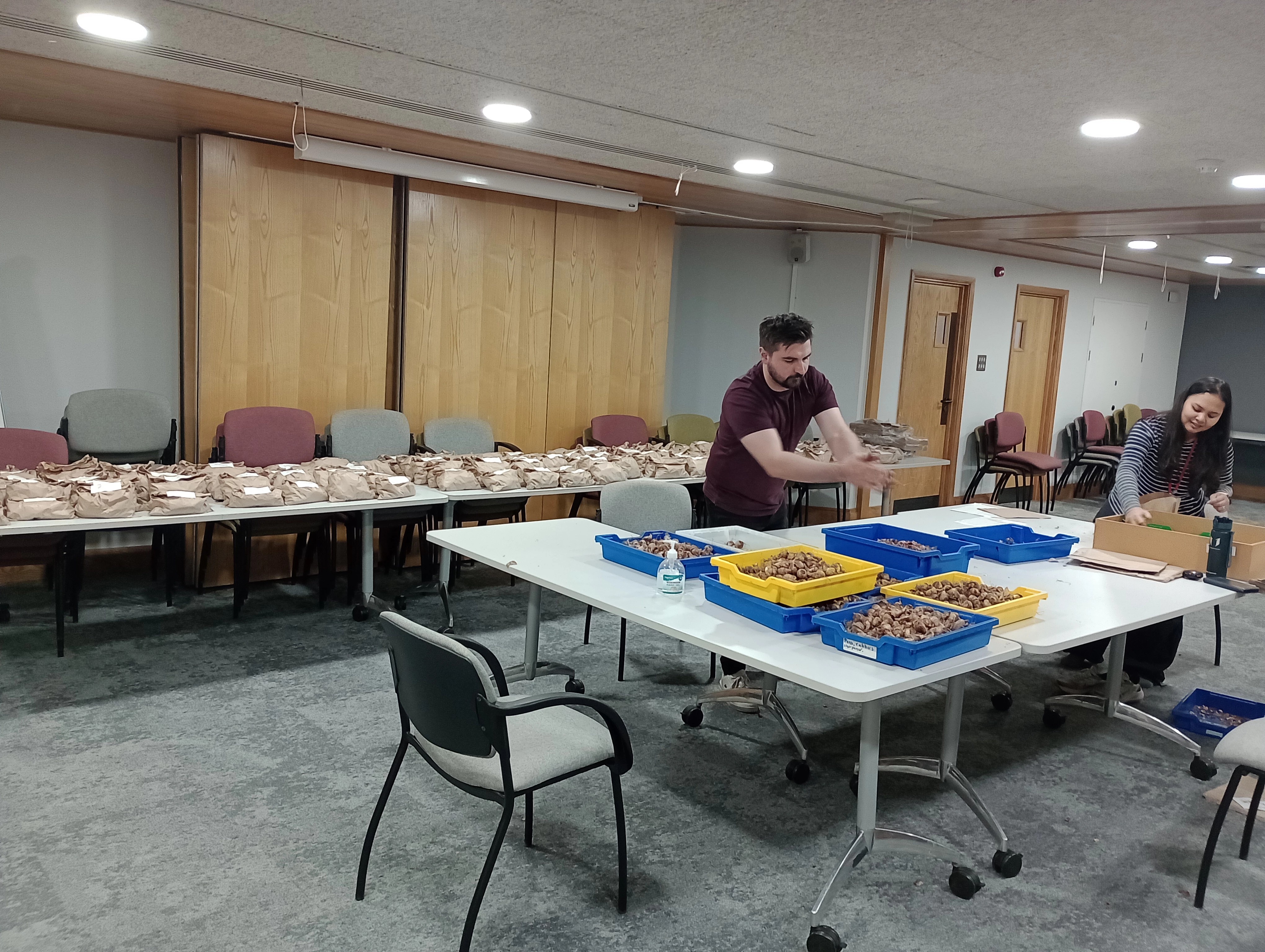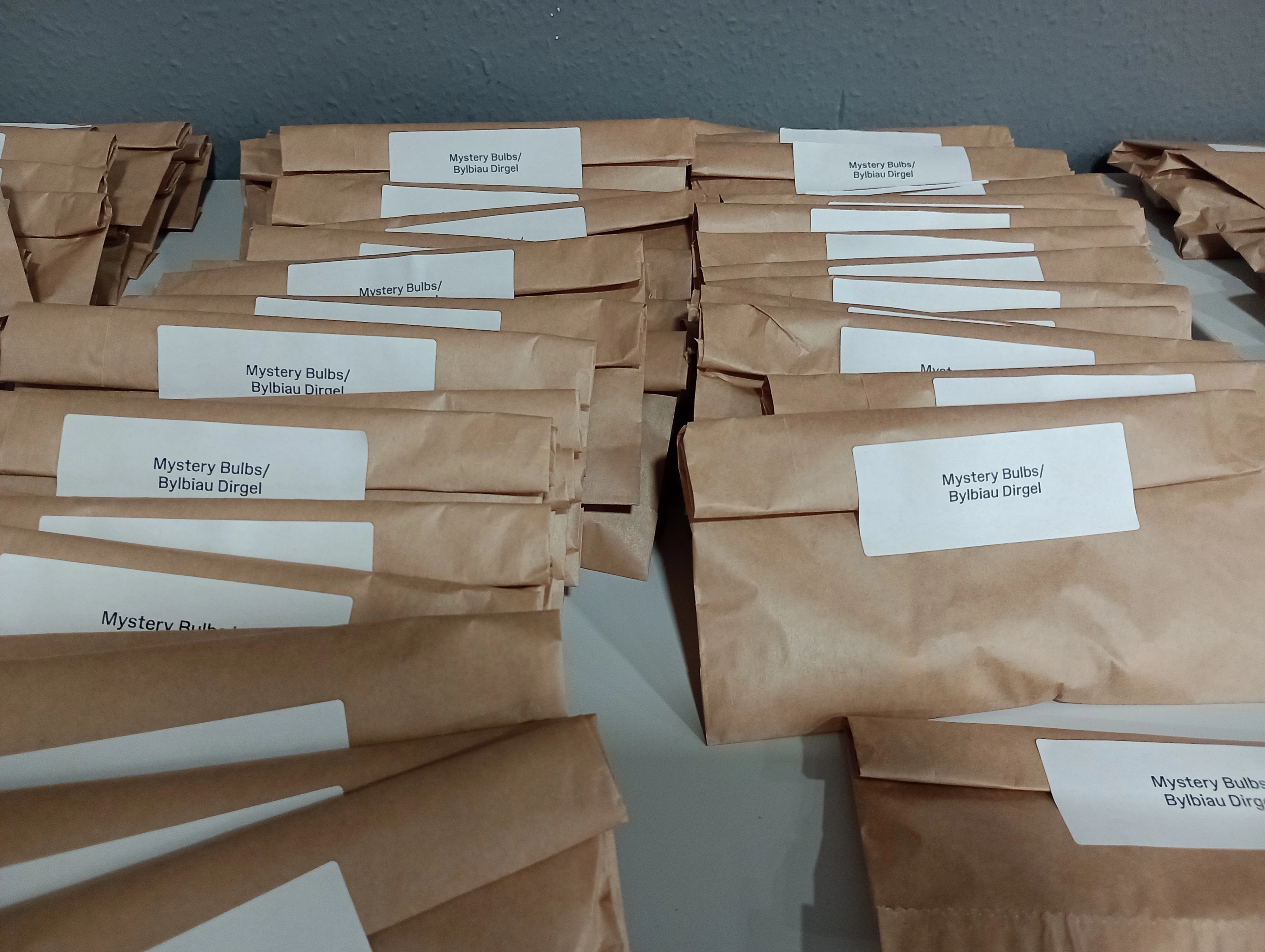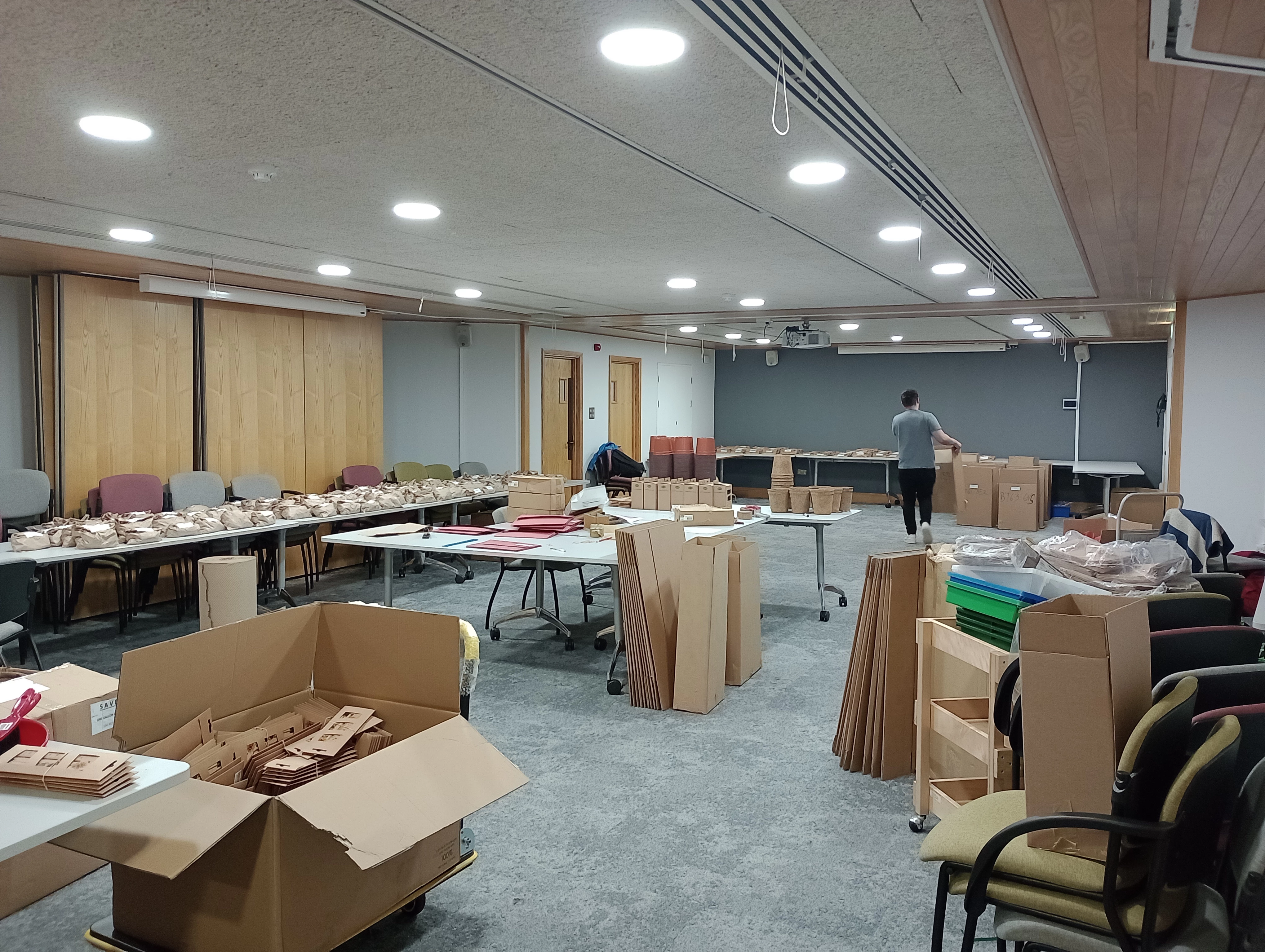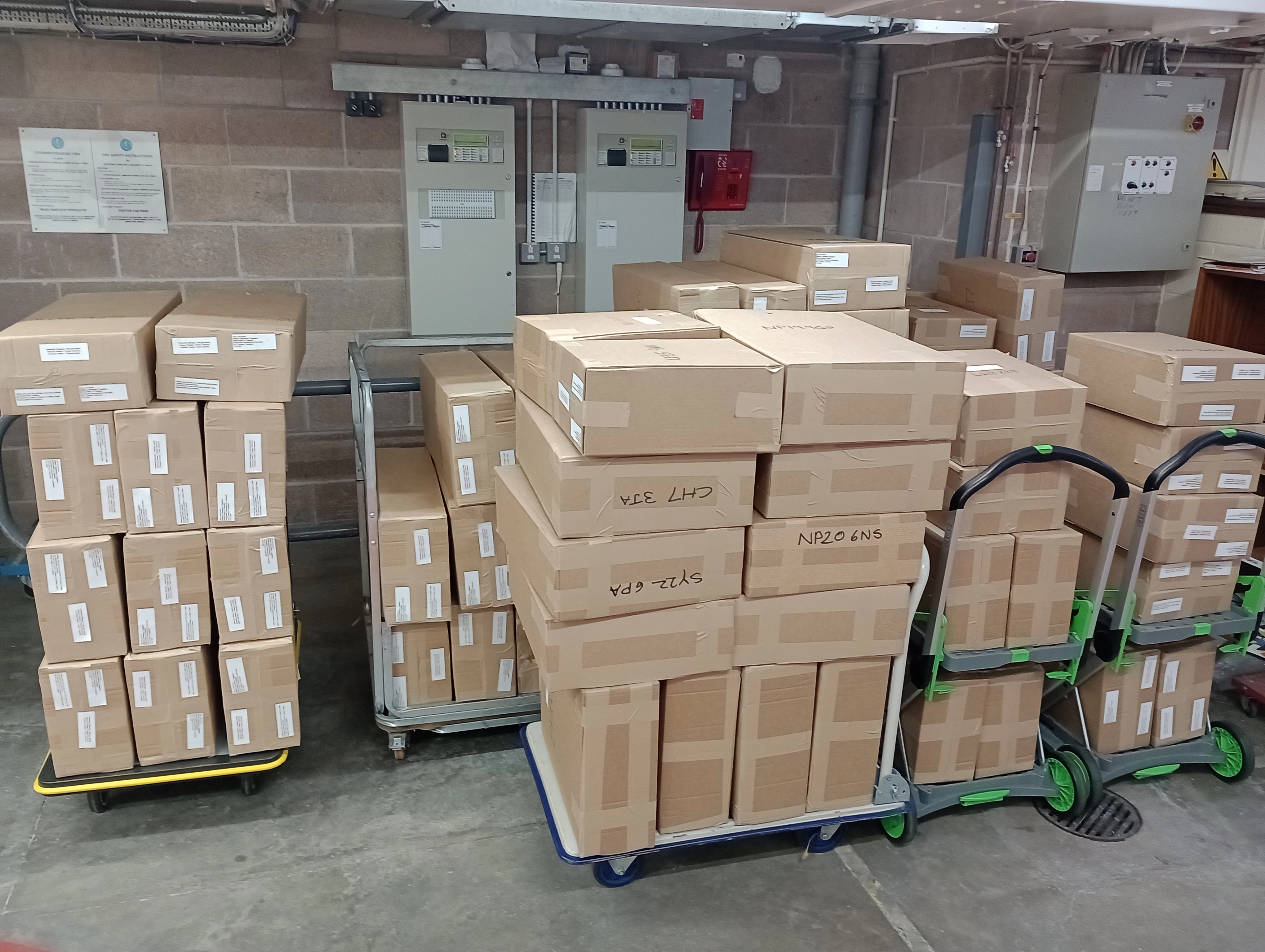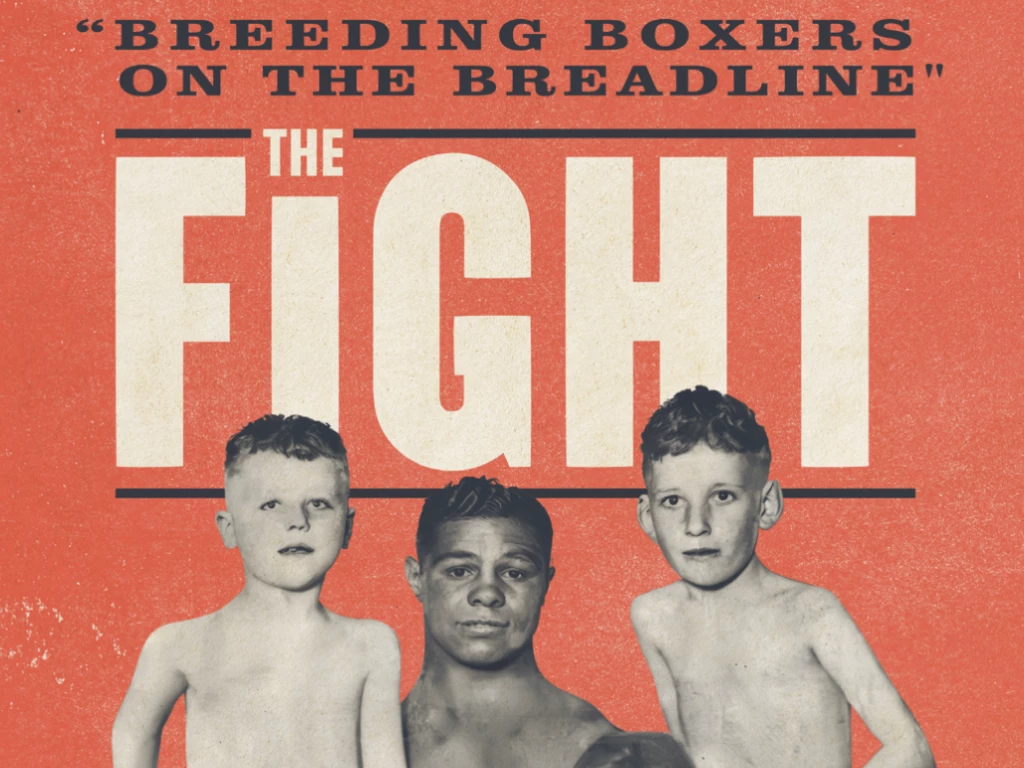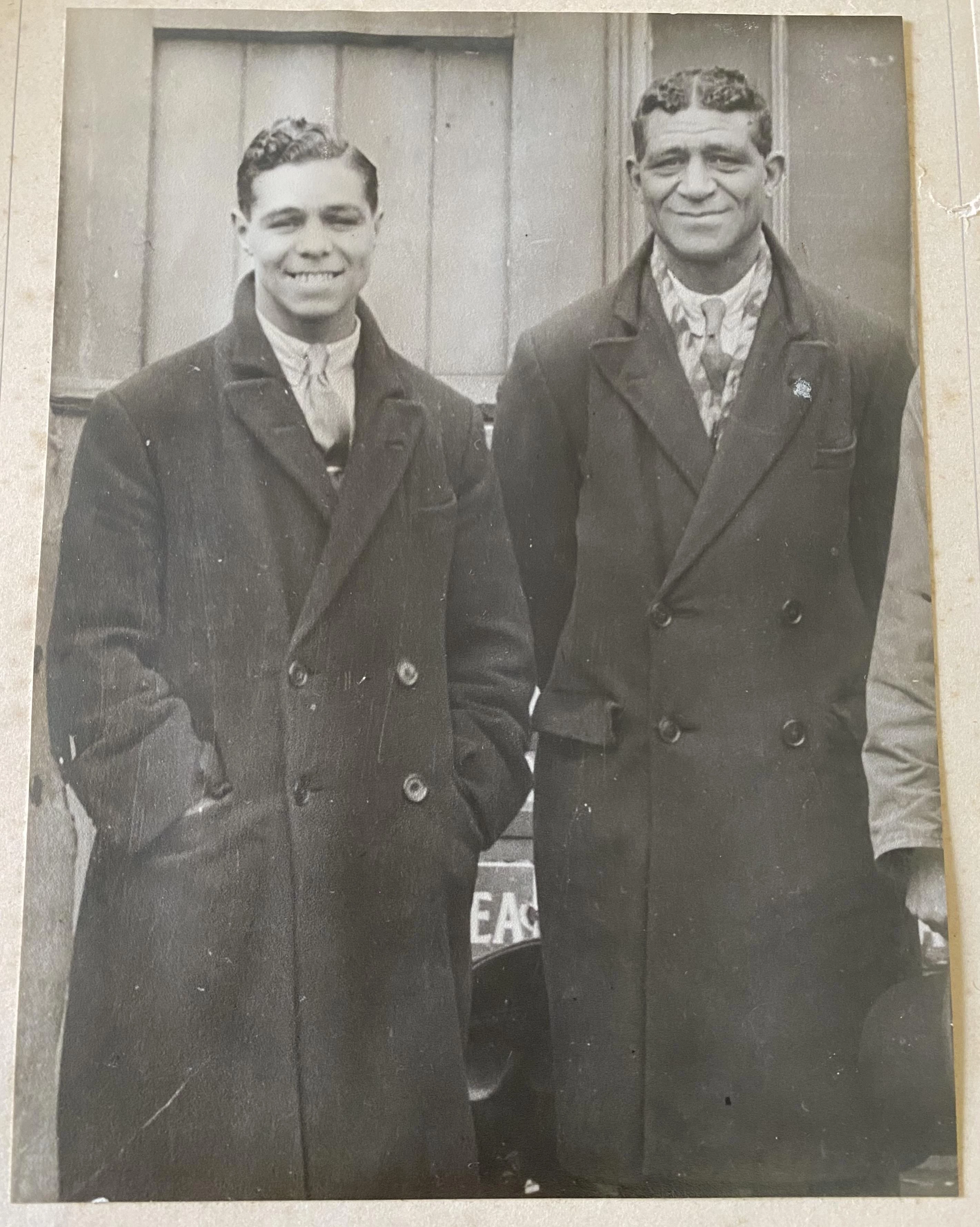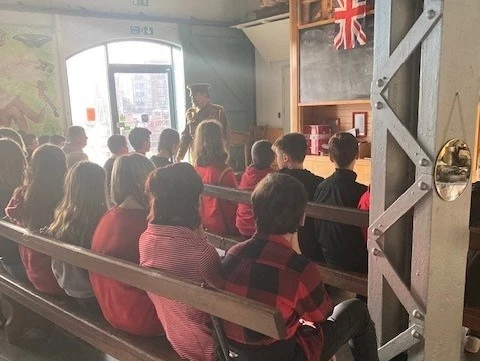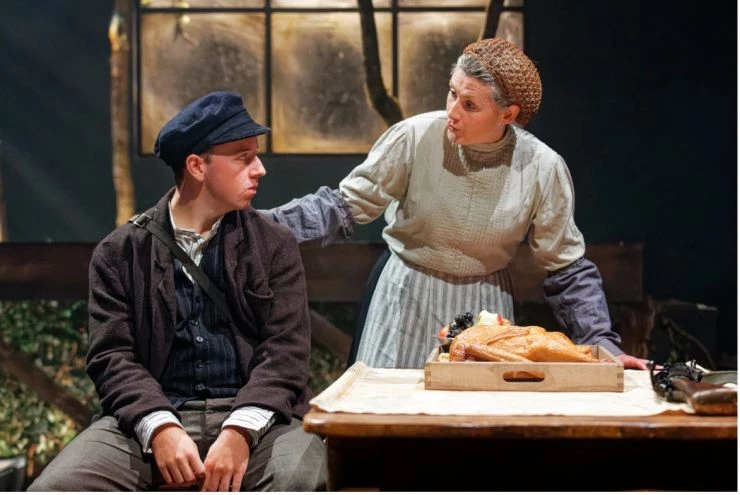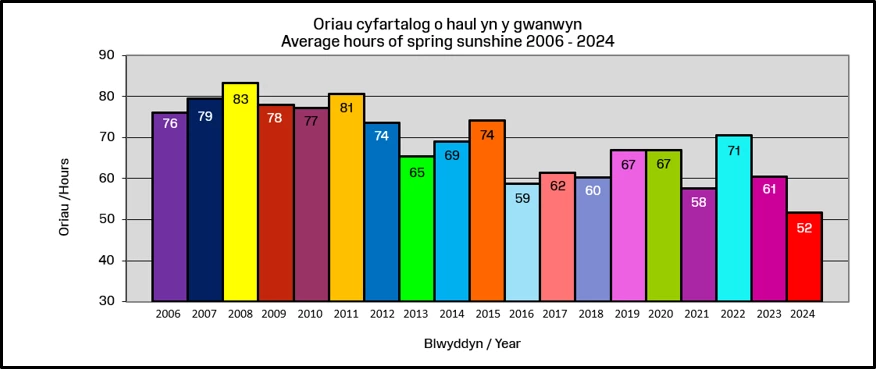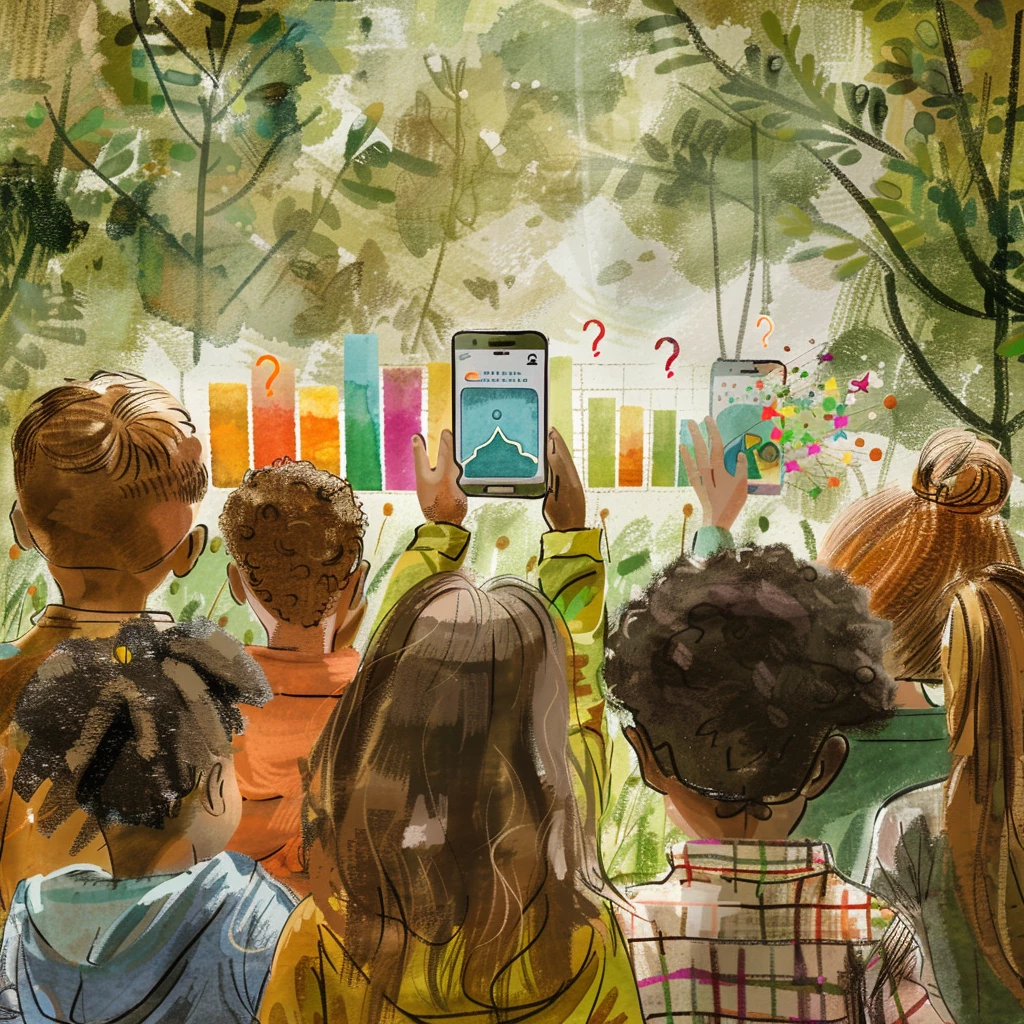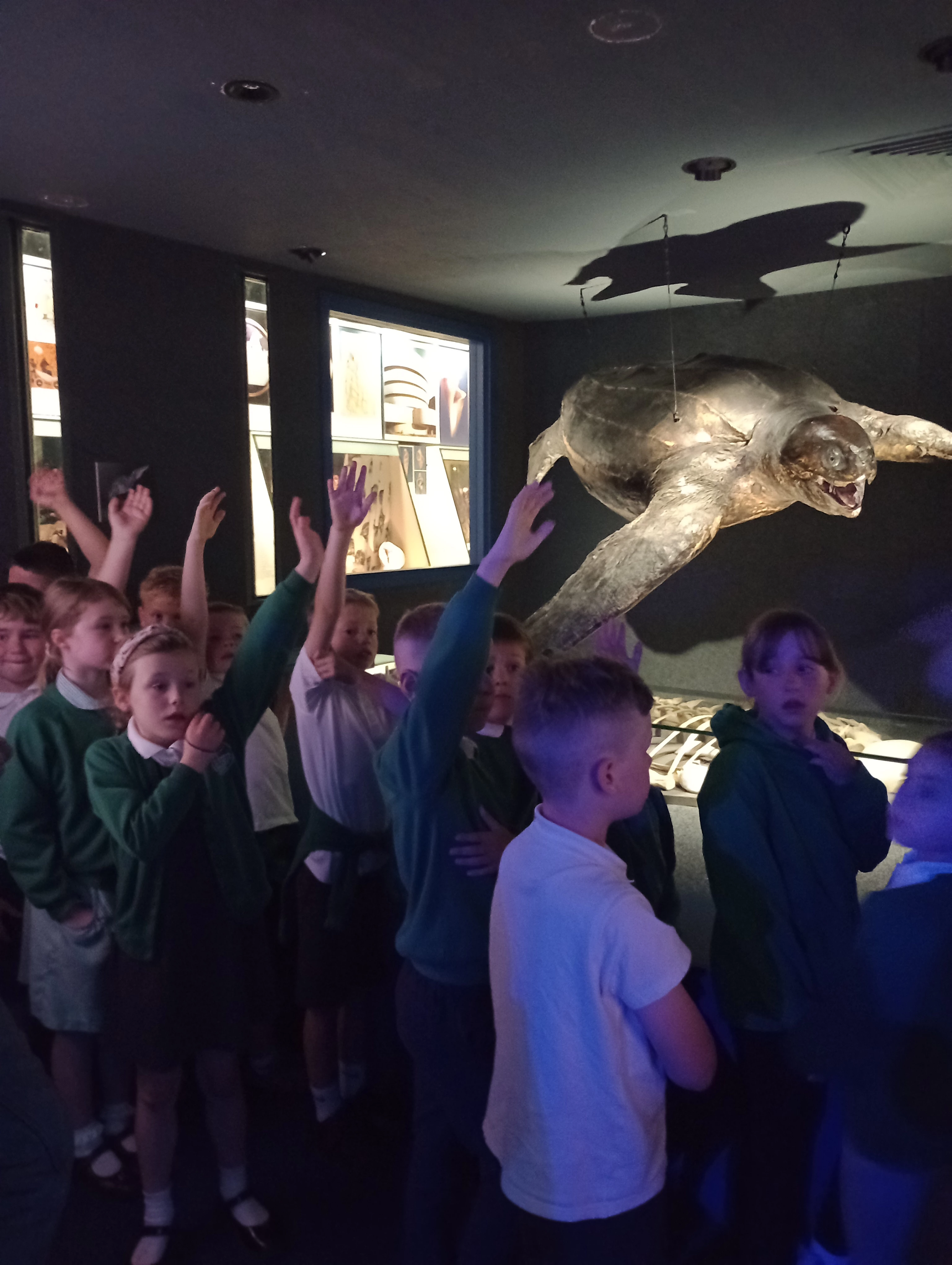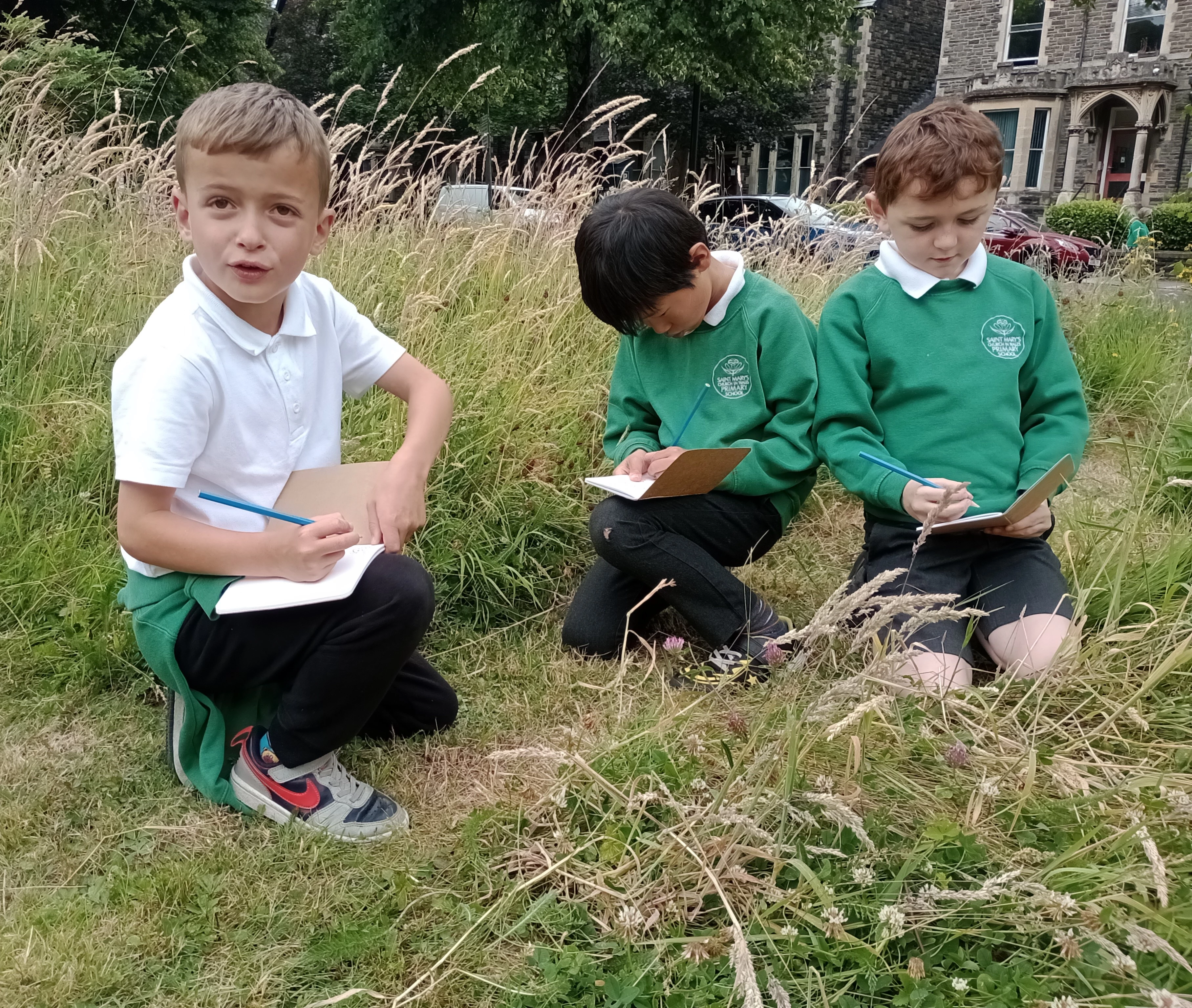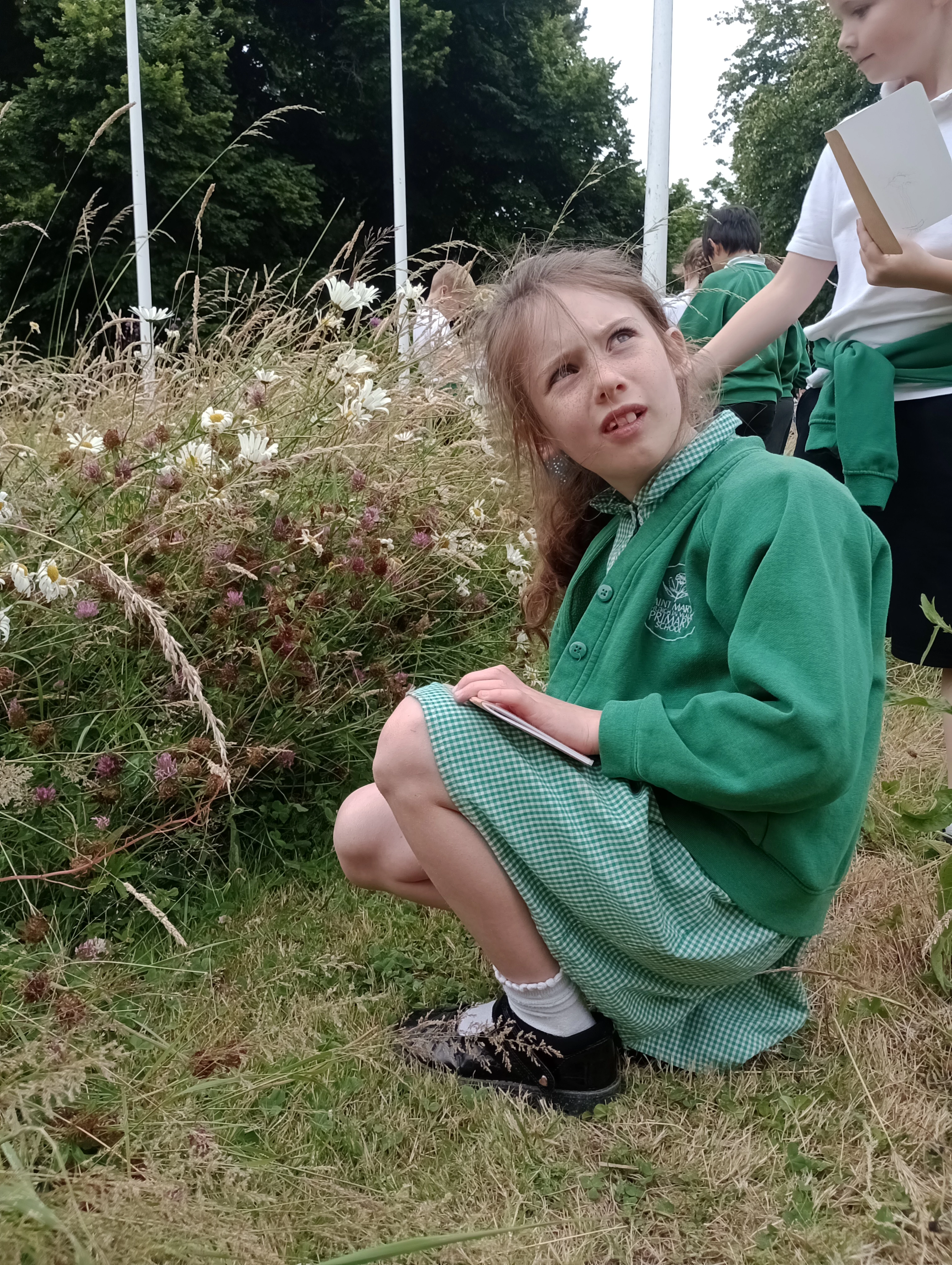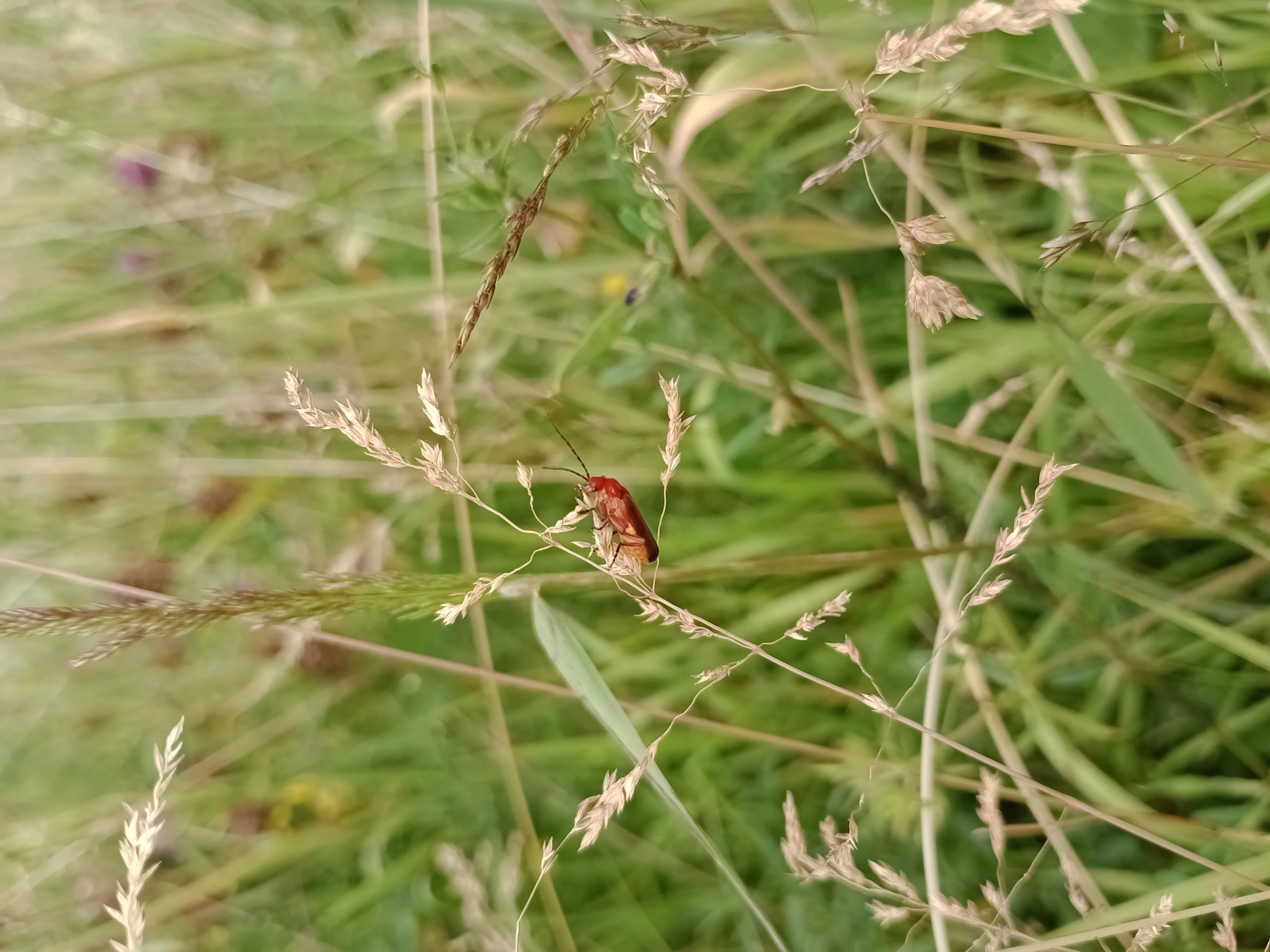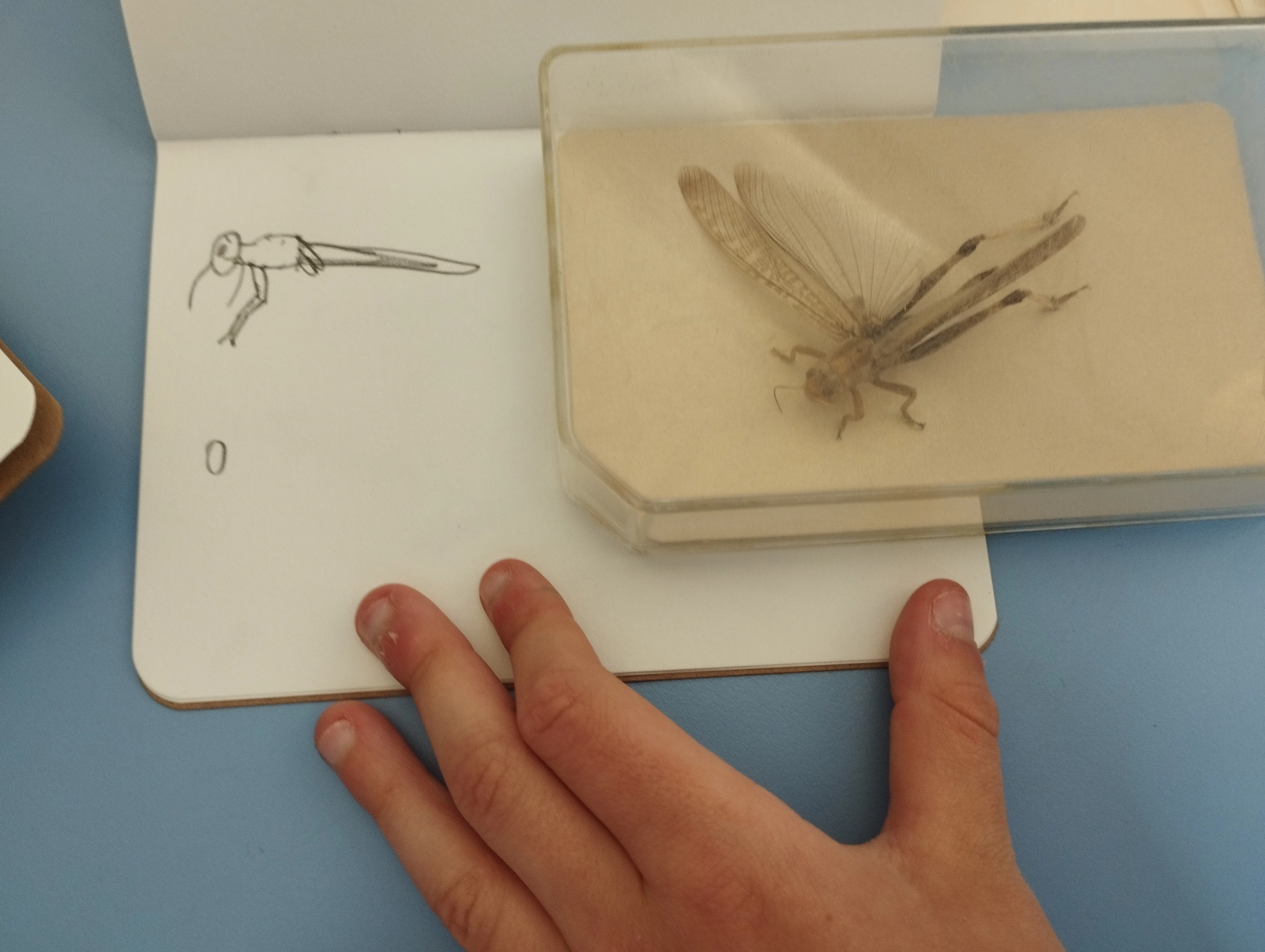Spring Bulbs for Schools Investigation - Resources for Schools
, 30 September 2024
The new academic year is well underway. Professor Plant and his happy helpers have packed and distributed 175 resource packs to schools across the UK.
These packs contain everything that schools need to participate in this year's investigation:
- A pot and bulbs for each participating child
- A rain gauge and a thermometer to record weather data
- A calendar to keep track of weather and flower data
- Vouchers to purchase peat free compost
- The Term Planner outlining key dates for the project
- A biodegradable pot to compare different materials
- Mystery bulbs to learn about different plants
On 21 October (or the closest date possible) schools are tasked with planting their Tenby daffodils and whitewell crocus bulbs. This is the first action for nature that participating schools will take as part of the project. Please follow this blog and @Professor_Plant on X/ Twitter to see the images that are shared as we celebrate this mass planting. @Professor_Plant will also share regular updates from schools over the academic year and will celebrate with them when their plants start flowering!
The first resources needed by participating schools are:
- Spring Bulbs for Schools: Teacher's guide
- Step 1: Preparing for planting day
All schools can follow the project and can use worksheets that are available on the website.
I look forward to sharing with you all the fantastic work that our Super Scientists undertake as part of this project.
Professor Plant
